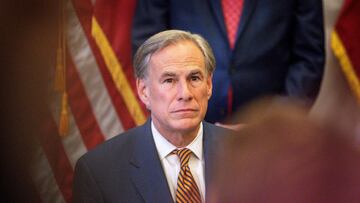State workers in Texas could receive a $10,000 salary increase: would the raise apply to teachers?
A bill has been introduced to give a raise to public workers in Texas, however, many groups, including teachers and firefighters may not be included.

Confronted by high turnover within the Texas state government, lawmakers are looking to pass a bill that would provide a $10,000 salary increase for state workers to increase retention. The bill, HB202, has been filed but has not been voted on by any committee or the chamber at large.
Democrat Rep. John Bucy III, who introduced the bill, has described the steady increase in the number of resignations within state agencies as an “unsustainable crisis.” In 2022, the state’s employee turnover rate reached 22.7 percent – the highest recorded in over a decade. Some of the most cited reasons for leaving the public sector included “poor pay and insufficient benefits.”
Ann Bishop, the executive director of the Texas Public Employees Association, told a reporter at Allied News that “state employees have not seen a general pay raise since 2014″ and that in that time the “buying power of their paycheck has dropped twenty-seven percent.” To members of Bishop’s organization, the prospect of a raise is “welcome news” and the historic state budget surplus as the “right time to make an overdue investment in both current and retired state employees.”
Texas teachers left out of Rep. Busy’s bill
The raise, which would take effect on 1 September 2023, would apply to “full-time employee of a state agency, including an institution of higher education.” Additionally, part-time workers would also see a proportional salary increase. Teachers are not included in the funding package since they are not directly employed by a state agency, rather a school districts that operate at the municipal level.
The Texas AFT, an AFL-CIO-affiliated organization that represents “non-administrative certified and classified public school employees in the state of Texas,” has pushed for teachers and school staff to be included in the bill. Like state agencies, Texas is also experiencing a teacher shortage that could worsen significantly in the coming years if action is not taken.
The problem has grown so significantly that the state has put together a Teacher Vacancy Task Force to begin identifying solutions to attract and retain educators in the Lone Star State.
A survey conducted in conjunction with the Task Force found that seventy-seven percent of teachers had “seriously considered leaving the profession” in 2022. Since 2020, this rate has increased by more than nineteen percent, and more concerning are the “seventy-two percent” of teachers interested in leaving who “have taken concrete steps to do so.”
Texas students suffer as teacher shortage intensifies
However, some education experts, like Dr. Robin Jocius, an associate professor of curriculum and instruction at the University of Texas at Arlington, note that the teacher shortage is not new.
“While the pandemic has accelerated the need for more solutions, there has been a teacher shortage for years. We’re in a crisis of both retention and recruitment,” said Dr. Jocius.
What concerns many looking at trends in the education sector is not the rate of new teachers who are leaving leave the profession within five years of entering, but a greater portion of “veteran” teachers who “are choosing to seek other careers.” As a greater number of older teachers leave by choice or retire, the state remains unable to “recruit new teachers” due to a set of a compounding factors, including “relatively low pay, burnout and increasingly difficult work conditions.”
Dr. Melissa Hulings, an assistant professor who works alongside Dr. Jocius, said that student outcomes could suffer if investments to attract and retain teachers are not made.
“This shortage means students will have classes with temporary teachers, some of them uncertified, or be combined into classrooms with more students, neither of which are beneficial to students or teachers, explained Dr. Hulings.
Catherine Robert, another professor at UAT, says that if lawmakers are serious about addressing the teacher shortage, they will increase pay. “Keep raising teacher pay,” and providing “teachers with a career path and growth options that are not only about students’ test scores,” are just some ways policymakers can work to retain teachers in districts across the state.
Whether or not lawmakers in the state’s capitol will take up these solutions remains to be seen.






